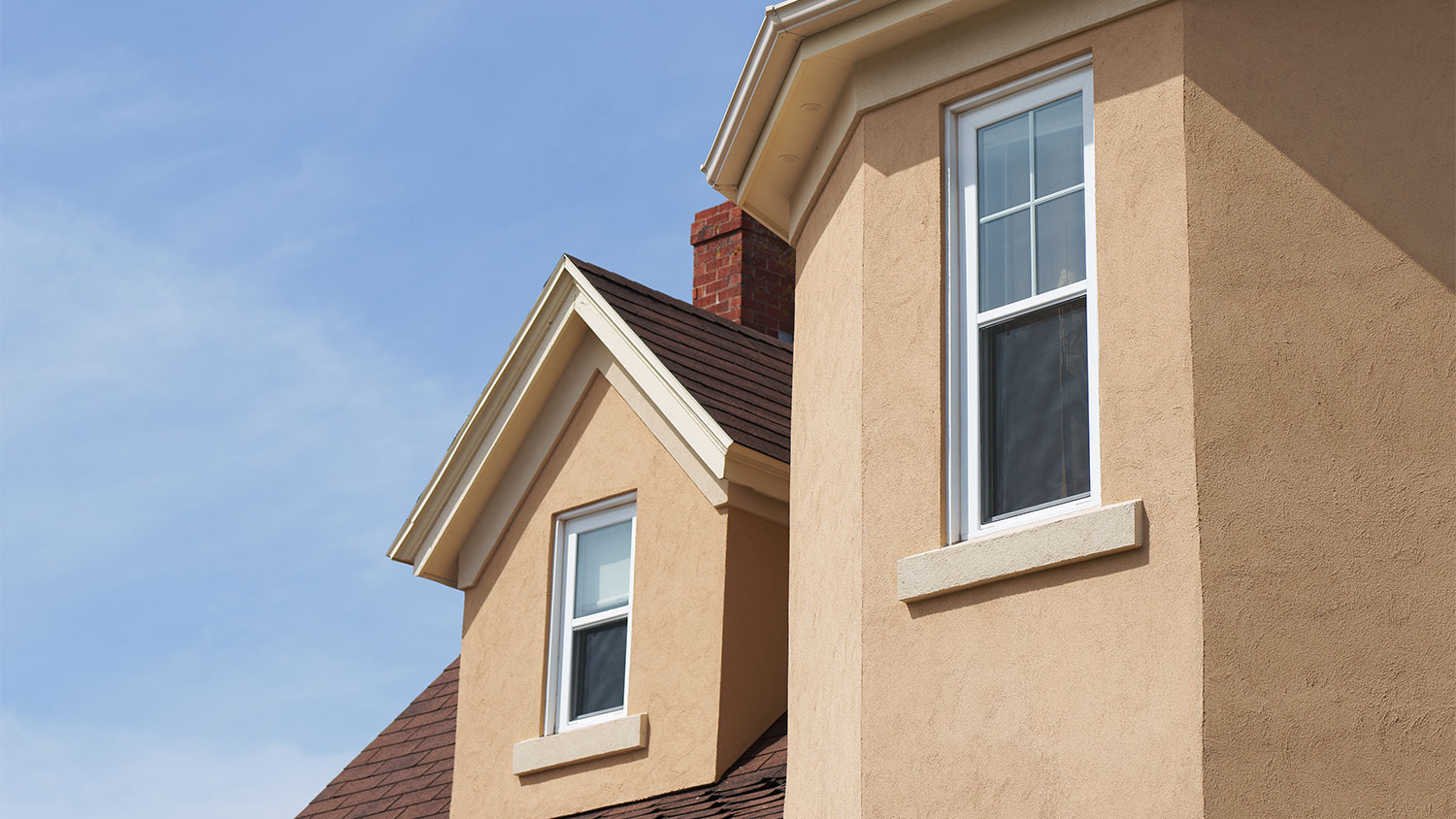
Discover the cost to stucco a house in 2025, including average prices, key factors, and tips to help you budget and plan your stucco project with confidence.
Don’t get stuck with these siding problems


EIFS stucco is a multi-layer cladding system that mimics the look of traditional stucco.
EIFS stucco can be prone to moisture retention, impact damage, cracking, discoloration, and other problems.
Quality installation and regular maintenance can help avoid problems with EIFS stucco.
Exterior Insulation Finishing System (EIFS), often referred to as “synthetic stucco,” is an exterior cladding system consisting of multiple layers and with a finish that mimics traditional stucco. Like most cladding and siding materials, there are EIFS stucco pros and cons to consider before you decide if this is the right material for you. Benefits include a lighter weight than stucco, flexibility, and energy efficiency. We explore six common EIFS stucco problems and how to solve them.
Improper installation of EIFS stucco can lead to moisture retention in both the multiple EIFS layers and behind them in your exterior walls. The most common causes of moisture retention include incomplete sealing around fixtures, joints, and edges, an improperly installed or missing drainage layer, and gaps around windows and doors.
To prevent moisture retention, ensure that your EIFS system has been properly installed, including the drainage layer. You’ll also need to regularly inspect the edges of the cladding to ensure all gaps are fully sealed and there’s adequate sealant to waterproof your stucco. Sealant can deteriorate over time, so it’s important to check that it’s still intact and working properly.
This type of stucco alternative is far more susceptible to impact damage than traditional stucco. Unlike stucco, which has a hard surface directly underneath the finish, EIFS stucco is installed over a layer of foam backing, so any impact can puncture the finish and damage the underlying layers.
Installing impact-resistant barriers like kick plates can help prevent ground-level damage. Take extra care when working near or on your home’s exterior to avoid puncturing the EIFS with ladders or tools. If you do notice any holes, cracks, or other impact damage, promptly repair the damage before it has a chance to worsen.
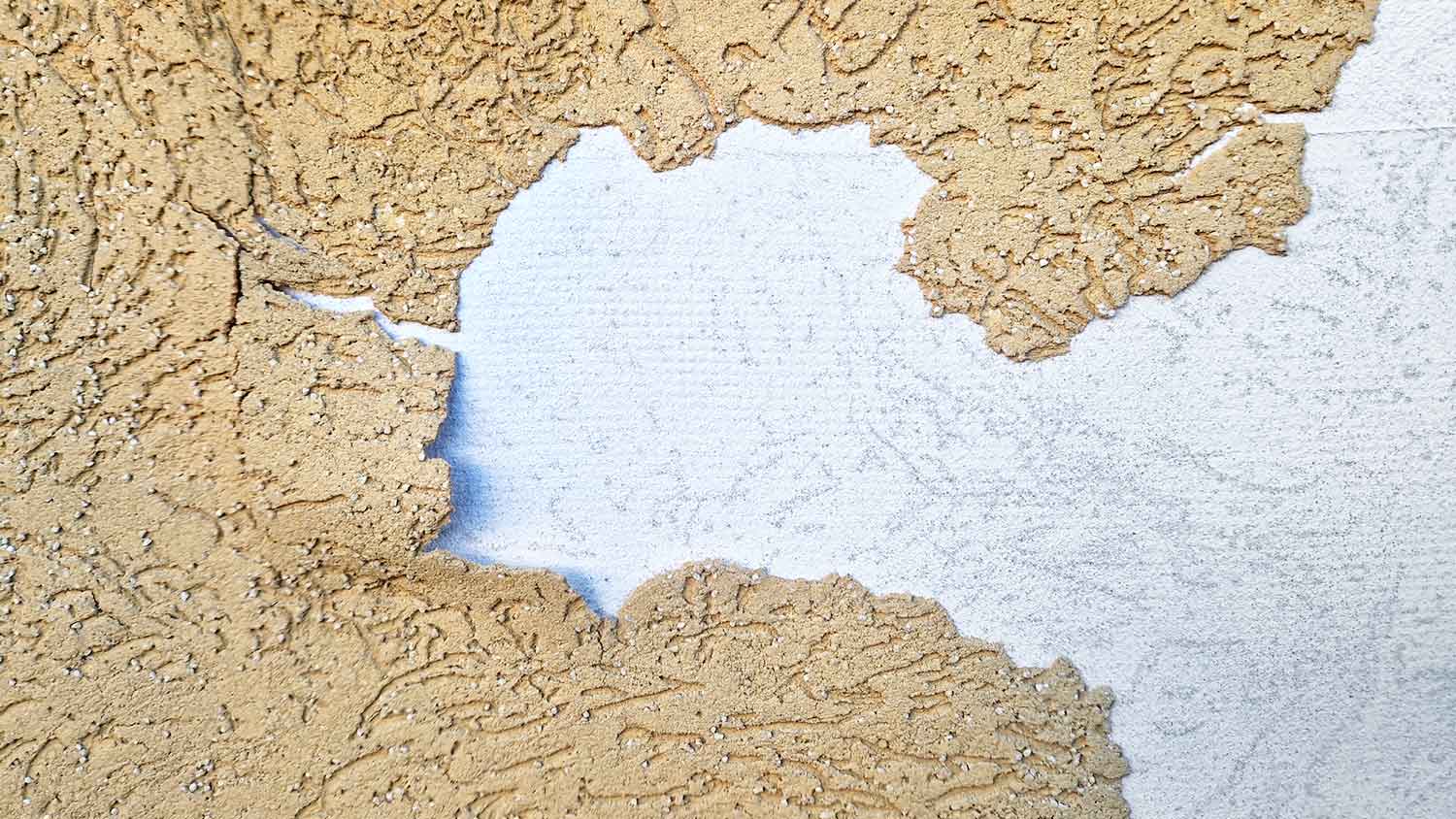
EIFS stucco may detach from your home’s exterior walls, leading to moisture intrusion and structural issues. This may happen if not enough or the wrong kind of fasteners were used during installation, if the exterior surface wasn’t prepared correctly before installing the EIFS, or if the attachment was weakened over time due to moisture damage or material deterioration.
To prevent detaching, ensure that all installation steps have been followed exactly, including wall prep and the number and type of fasteners. If your EIFS stucco is detaching from the wall long after installation, consult a pro who does stucco repair to fix or reinstall the cladding.
Some adhesives, sealants, and EIFS panels installed without expansion joints may not have enough flexibility to be able to expand and contract with temperature changes, causing cracks where the material has been stressed. Cracked panels allow water infiltration, worsening the problem and damaging your exterior walls.
To prevent cracking from temperature fluctuations, use only high-quality, flexible adhesives and sealants and use expansion joints when installing large EIFS panels. If you discover existing cracks, promptly repair them, since continued temperature changes will cause the cracks to expand further.
Discolored EIFS stucco can result from water retention, dirt and debris, or mold, mildew, algae, or fungal growth. Any of these issues can cause staining in the EIFS layers, discoloring the finish and leaving an obvious eyesore.
Regularly clean your EIFS stucco according to the manufacturer or installer’s recommendations, which will help remove dirt and discourage biological growth. Using a waterproof sealant can offer an additional layer of protection against water and other environmental factors. In addition, trim back any plant growth that comes in contact with the side of your house to improve airflow and avoid moisture retention and staining.
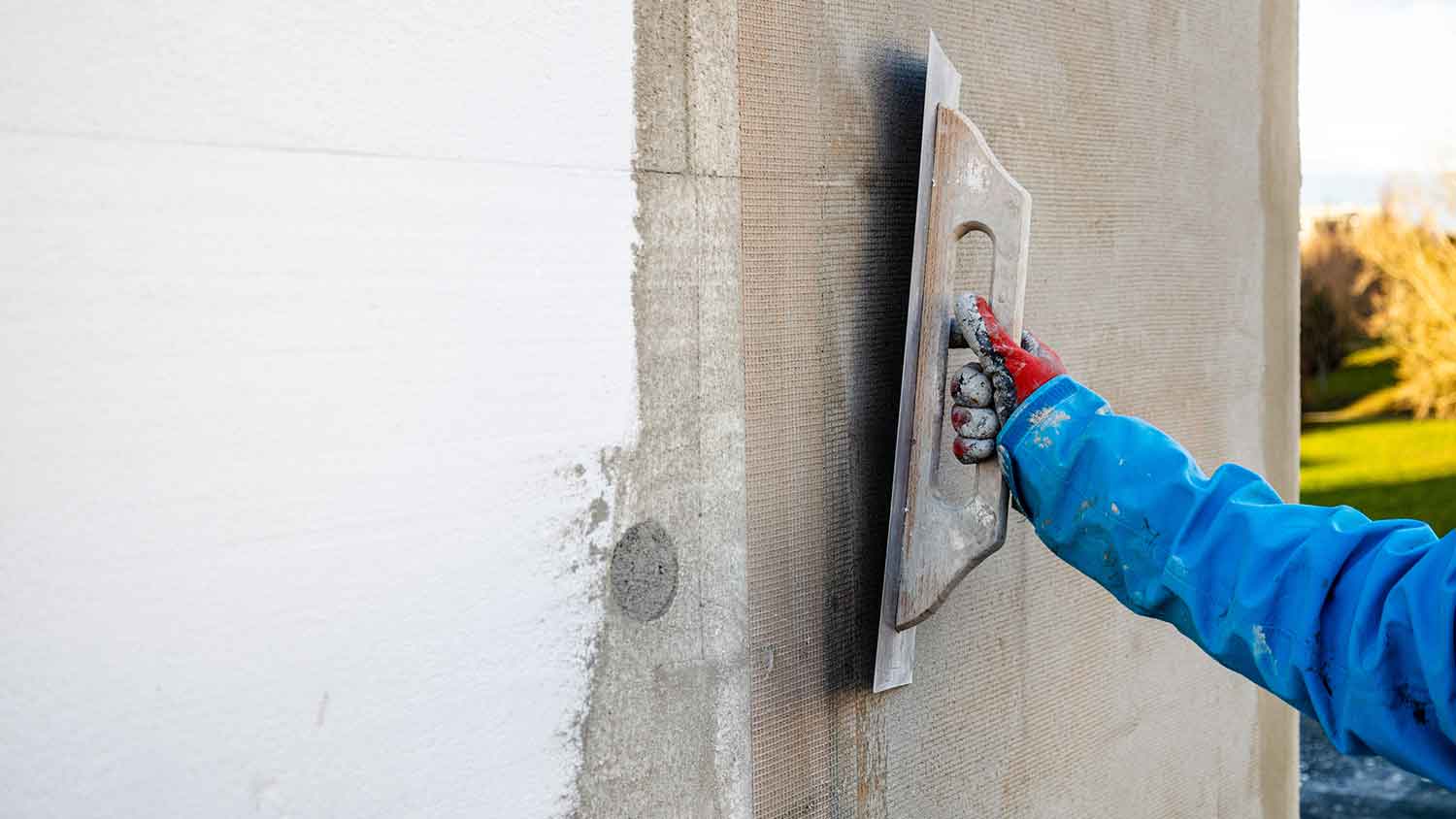
Because EIFS is prone to small cracks and holes, it’s also susceptible to pest infestations. Pests can tunnel through the layers of EIFS and gain access to your home, doing damage as they move through your home’s exterior components.
Repair any holes or cracks as soon as you notice them and ensure all gaps are fully sealed. Inspect your home’s exterior for signs of pests and use the appropriate treatments to discourage them from invading your home.
When it comes to EIFS, if you need to repair or replace your stucco, call a local stucco pro. The installation and repair process needs to be done exactly right to maintain your home’s protection, so you shouldn’t chance further damage by trying to DIY.
Be sure to ask a stucco pro you’re interviewing if they have experience with EIFS stucco, since it differs from traditional stucco in many ways. EIFS stucco can be more expensive than the cost to stucco a house, so you’ll want to be sure the job’s done correctly. Removing stucco is also a job best handled by the pros, since improper removal can damage your home’s exterior.
Homeowners need to manage moisture to protect the longevity of their siding, which is where weather-resistant barriers come into play. Professional installation, especially with stucco, is essential for preventing cracks as well as keeping the foundation protected.
From average costs to expert advice, get all the answers you need to get your job done.

Discover the cost to stucco a house in 2025, including average prices, key factors, and tips to help you budget and plan your stucco project with confidence.

Get transparent stucco inspection cost info. Learn what impacts price, how to save, and what to expect before hiring a pro for your stucco inspection.
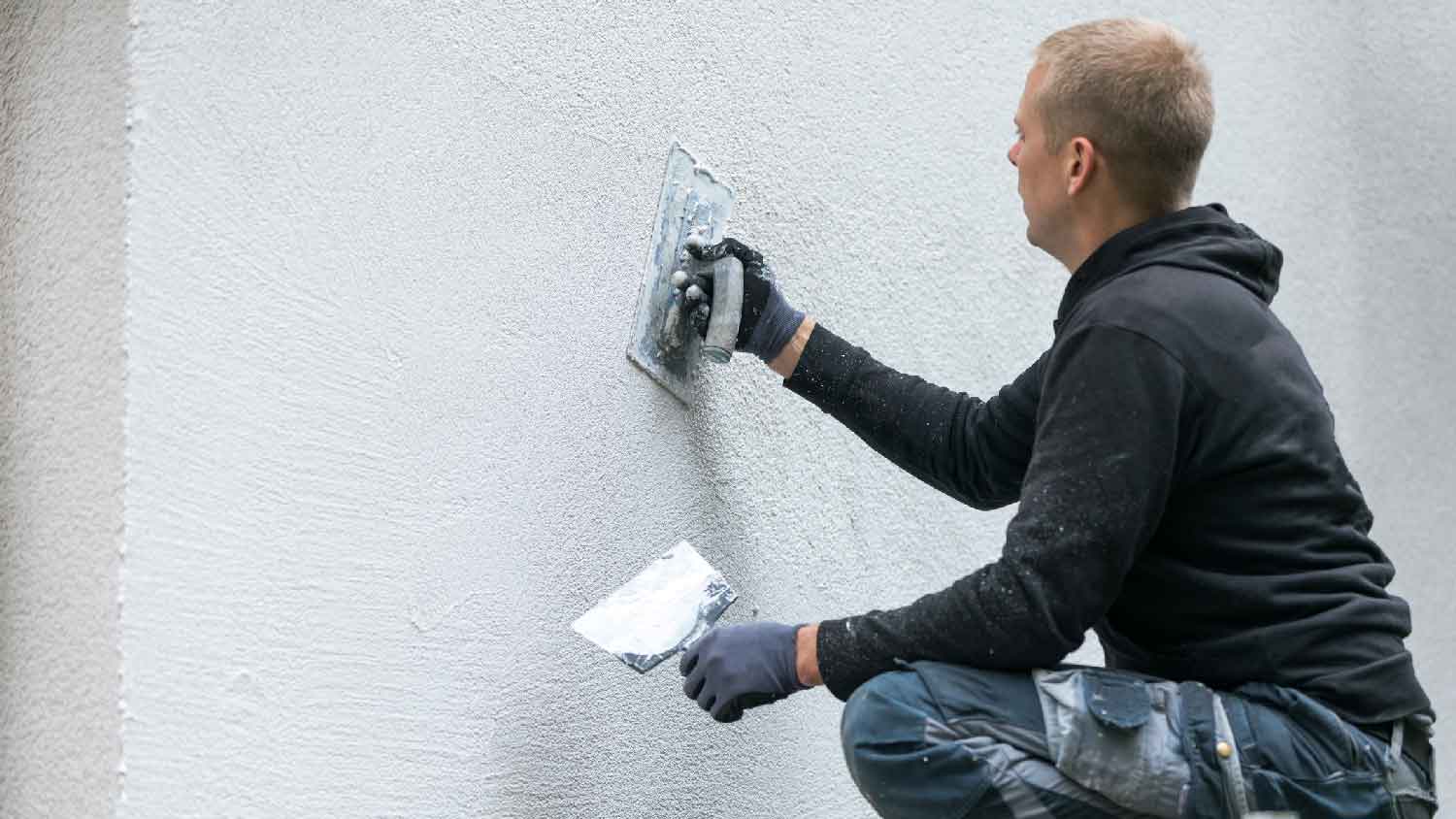
Discover the average stucco repair cost, key price factors, and ways to save. Get expert tips to budget your stucco repair project with confidence.

If your home's stucco is cracking or deteriorating, it's important to fix the issue right away to avoid structural damage or mold. Here's who to call for stucco repair.

Learn about stucco pros and cons to see if this siding option is a good fit for your home, budget, and climate, and see alternatives in case it gets a pass.
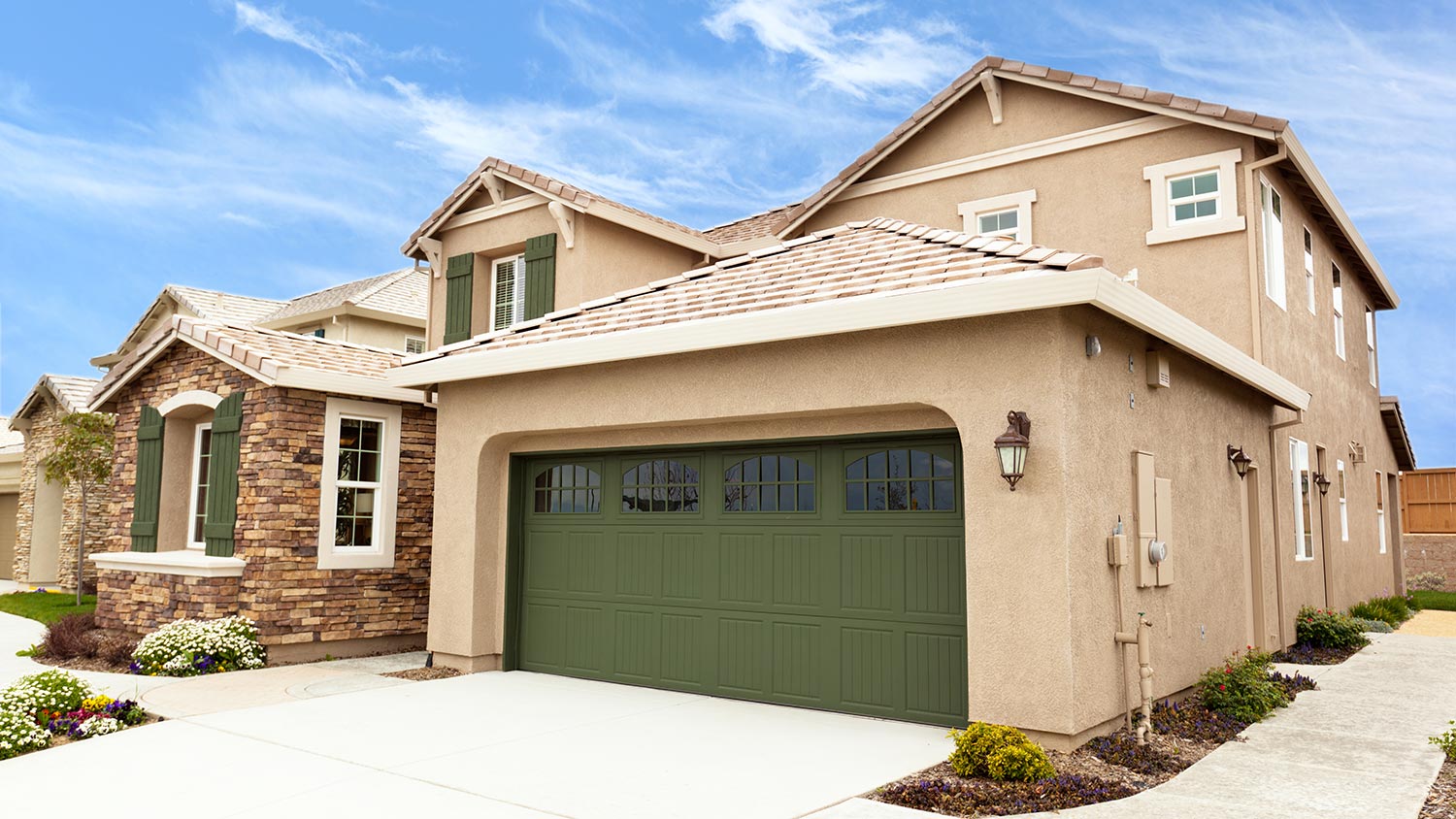
Wondering about the cost to remove stucco siding? Explore the cost breakdown, key factors, and money-saving tips for your stucco removal project.